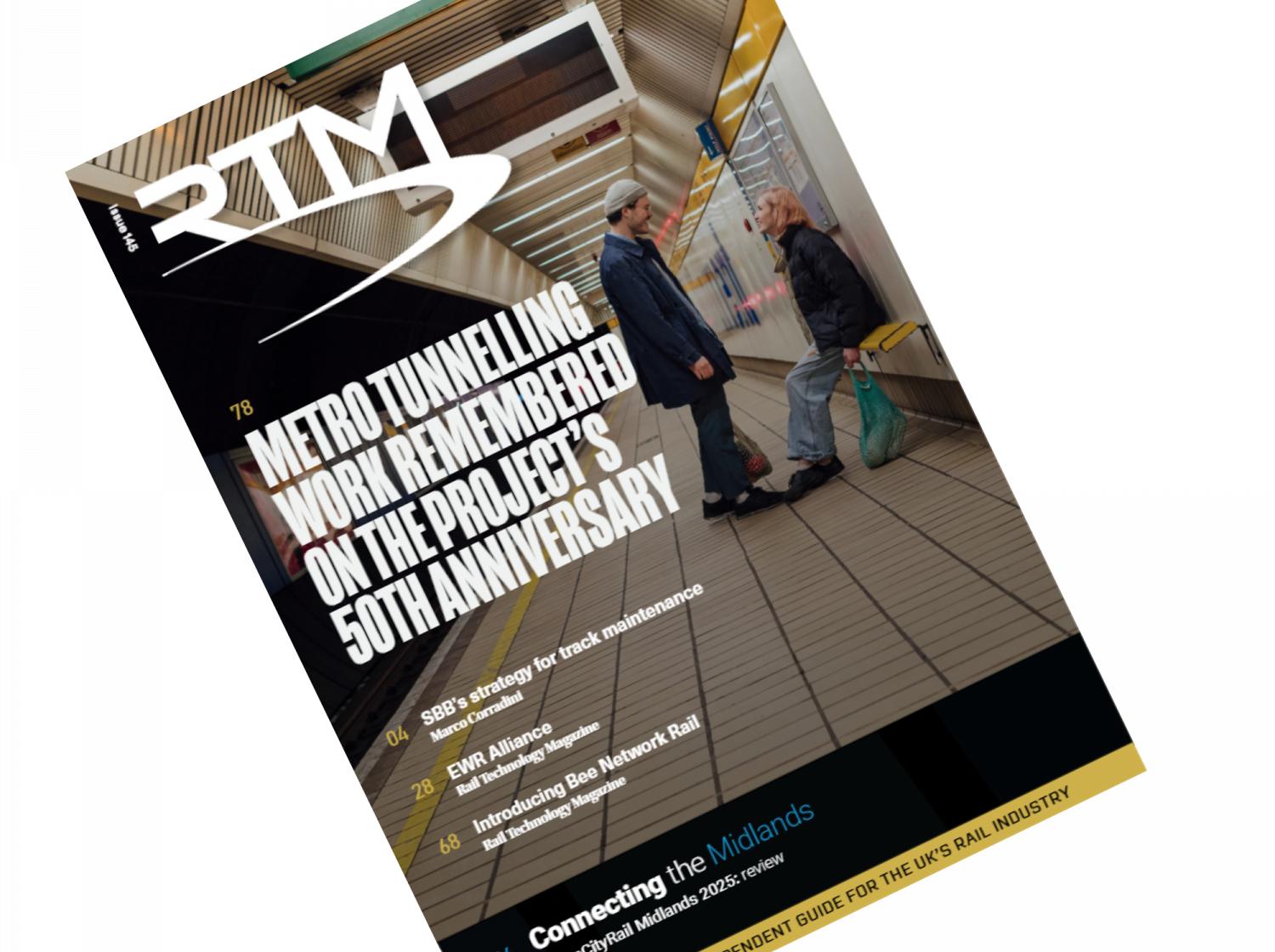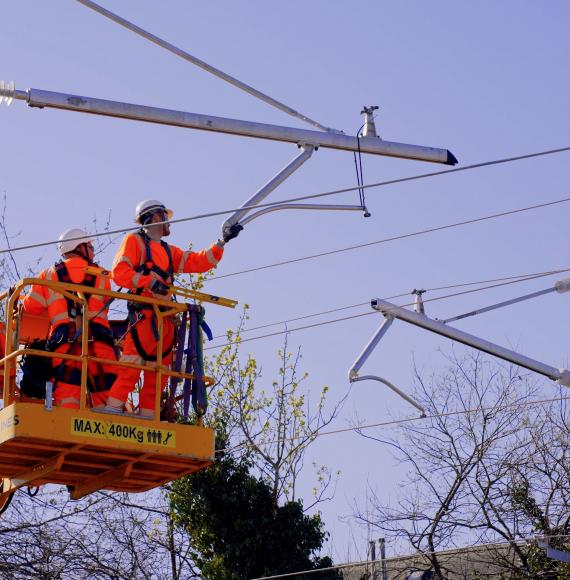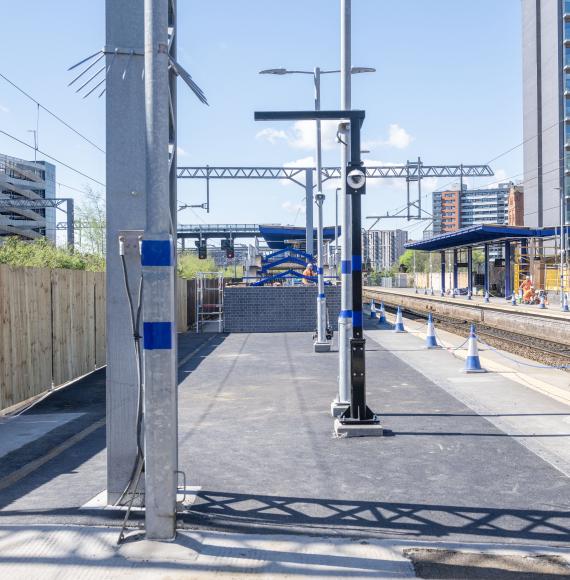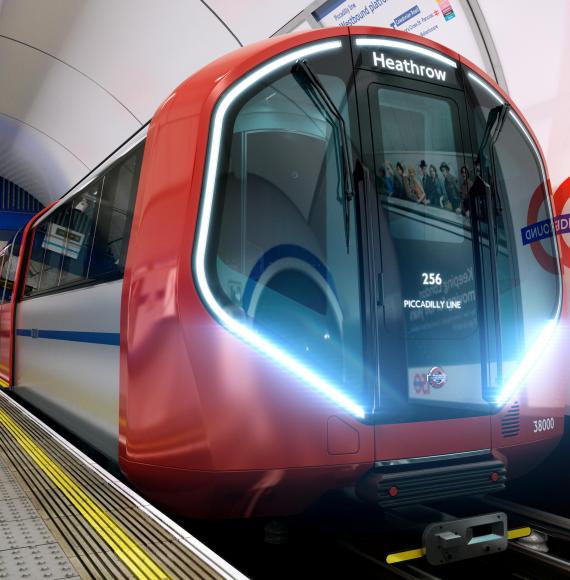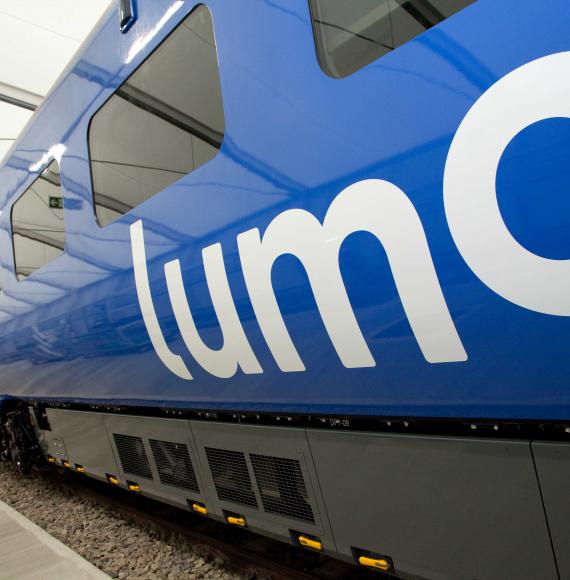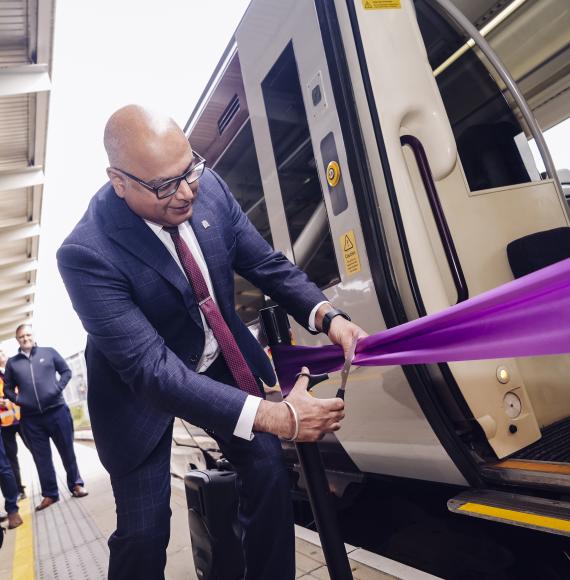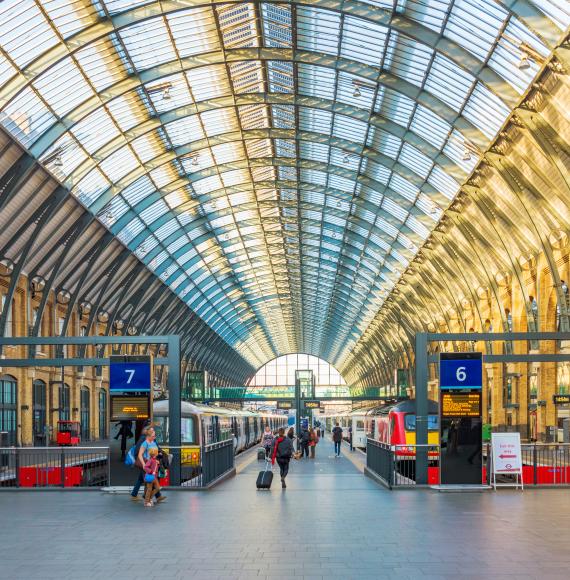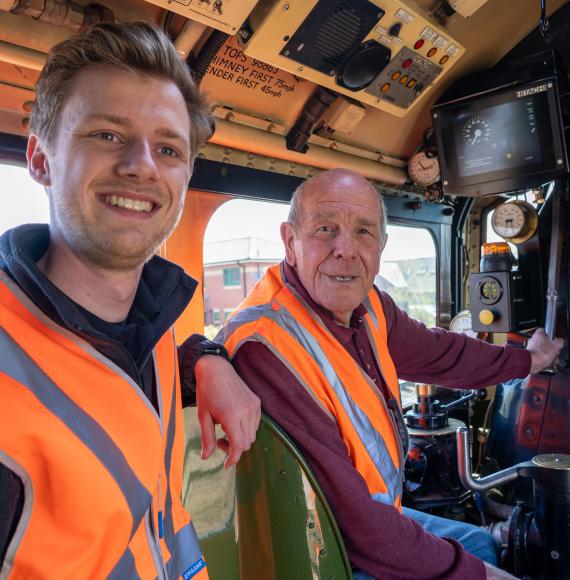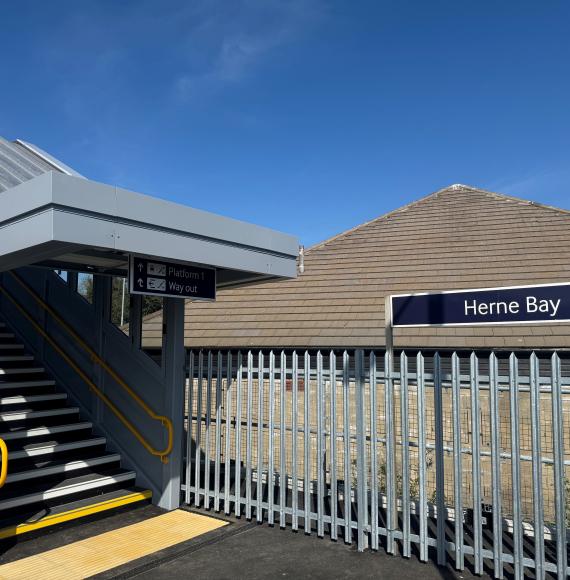Network Rail and its partners have begun trials of “beyond visual line of sight” aerial operations on the railway to test a concept that could bring major improvements for passengers and rail freight customers.
Beyond visual line of sight (BVLOS) drones have the technology to cover many more miles of track than their Visual Line of Sight equivalents, filling the gap between standard drones and the Network Rail helicopter*. With delays from trespass becoming one of the most significant causes of disruption on the railway – with over 1.5 million minutes since April 2024 – drones offer a game-changing speed of response. Similarly, the potential to survey the railway safely from above means Network Rail’s maintenance colleagues could be directed to potential faults quickly, rather than being forced to walk miles along the railway to find them, exposing them to risk and delaying any fixes.
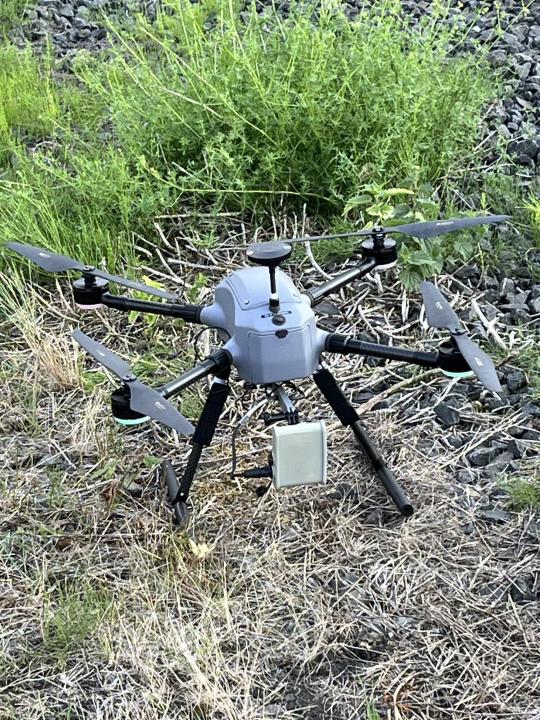
Two trials are underway with the aim of establishing protocols for the safe operation of BVLOS drones on the network and achieve Civil Aviation Authority (CAA) approval for their wider use.
In Birmingham, Network Rail’s Rail Operating Centre has a drone operations centre set up by Dronecloud to provide aerial coverage of the network around the city for incident response and general infrastructure monitoring. Set up in partnership with drone operator RUAS alongside drone manufacturers Velos Motors & Evolve, the Operating Centre has CAA permission to cover a range of 10km in the area. The service has already provided its worth after intervening in an incident at Birmingham New Street last year, saving passengers cumulatively hours of disruption by responding quickly.
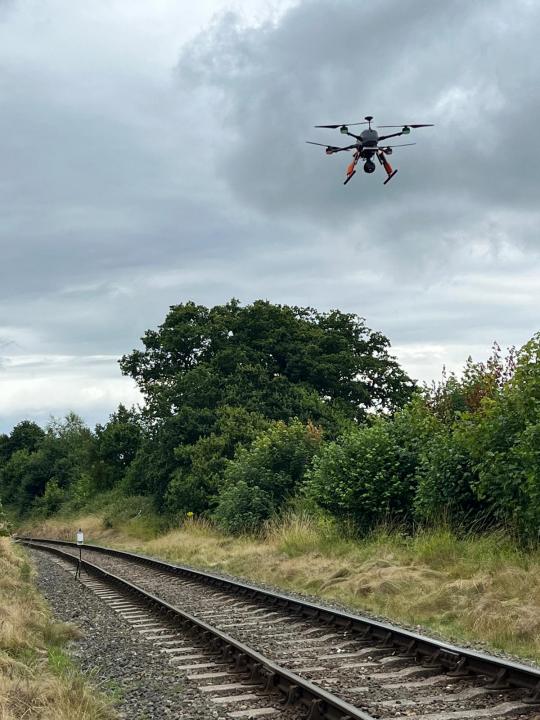
While the system is being trialled, the drone has to be monitored visually by observers on its flights, although the operator remains at the control point. Should CAA approval be received – hopefully later this year – the drone will be allowed to fly truly Beyond Visual Line of Sight.
Meanwhile, in Wolverhampton and on the private Severn Valley Railway, Drone Major and Network Rail are trialling a system called Digital Tethering™ to allow for BVLOS drone operations in areas with poor GPS/GNSS (Global Positioning System/Global Navigation Satellite System) coverage.
Both solutions offer faster response to operational incidents while assuring the safety of trains and people on the ground, and safety and privacy for lineside neighbours. The aim is to gain CAA approval for both aspects so they can be offered to Network Rail regions for use on the railway.
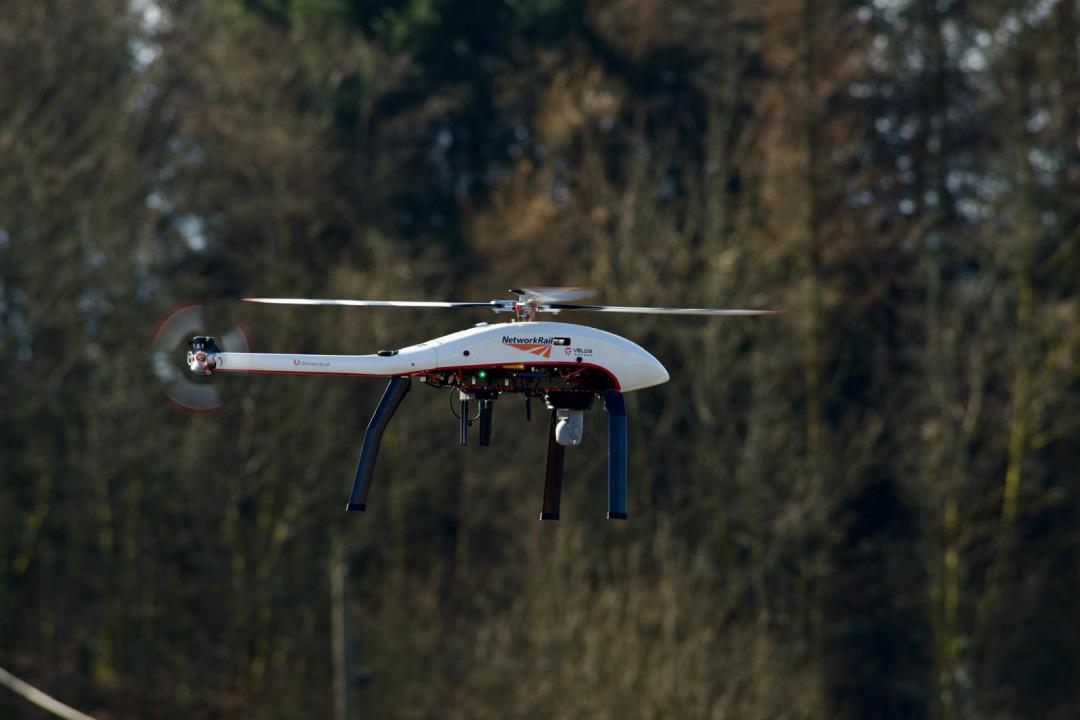
Network Rail’s programme manager for national drone strategy, Dominic Mottram said: “The potential for these projects to deliver a more reliable, safer railway for our passengers and colleagues is huge and could even be a game-changer.
“We operate one of the safest railways in the world, but it is also one of the busiest, so keeping trains running reliably while monitoring tracks and dealing with incidents can be a challenge and delays can spread quickly and far from the original source. Information provided by drones will mean our colleagues’ expertise in maintaining the railway can be focussed where it is needed, without exposing them to the risk of the ‘live railway’, and instances of trespass can be tackled much more quickly.”
Through proving the concept and gaining CAA approval for full BLVOS drone usage, it is hoped that the technology will spread across the railway and beyond, with the UK becoming a world leader in the field.
Image credits: Network Rail



